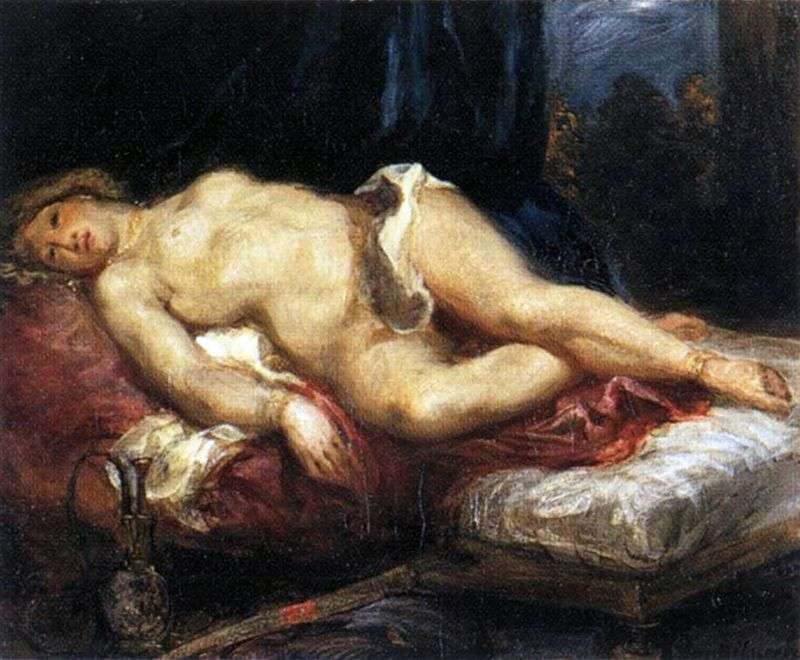
My eye is drawn to the dirty folds of drapery across her hips – they are supposed to cover her yet simply accentuate her nudity. The loose strokes and curving lines look agitated, at odds with the mood of the scene. It almost looks like a hand and arm attempting to grab her. The picture is titled ‘Odalisque’ suggesting a depiction of a harem, an image of languid, Eastern sensuality, a very popular subject throughout the nineteenth century. To a certain extent Delacroix conforms: the setting is dark and enclosed, and the woman seems drowsy, her body relaxed into sensual curves. The pale, soft flesh dominates the canvas, her torso shaped by the dark shadows beneath. There are just enough foreground details to establish that this is an Eastern scene and so the woman is not Venus, or a Parisian contemporary.
But my first impression of the drapery lingers and makes me uneasy. The woman’s position starts to look awkward. Her hip and pelvis are almost thrust upward, making them the highest point of the painting, whilst her neck and head are slumped lower, perhaps in a deliberate effort to get her facing the viewer. The awkwardness is not the relaxation of sleep but the unnatural limpness of unconsciousness or death. There is something about her gaze that is unseeing. She appears to be looking out at the (presumably male) viewer but Delacroix has painted her eyes as black holes, like a void in the canvas almost as if she is in a death-like swoon. Her slightly parted lips could be read as sensuality, but equally, she seems to have a complete lack of control or agency.
The whole painting is dishevelled - the loose brushwork of the drapery and the imprecise outline of the figure – both suggesting what has gone on before. The dominate colours – grubby red and white reference flesh and blood. And there is a vague threat in the dark background with the silhouetted shapes visible through the doorway. There is nothing decorative about this, none of the patterns or richness that you might expect in an odalisque painting, and no warmth. It’s all about darkness, imprisonment, seediness.
Comments
Post a Comment